
The Spiral
From the microscopic to the macrocosmic, creation expresses itself in spirals. Taijiquan's curved movements flow without beginning or end.
The Emergence of Spirals
When movement commences, it rolls forward along the line of time like a wheel turning. It takes on the shape of a spiral. Time nearly circles back on itself, instead its progression corkscrews through time. In fact, if you take a stop-action picture of the shape of the wheel turning through time, you will see the shape of a spiral. By simply observing nature, you will see that these round shapes, the curve, circle, ellipse, sphere, spiral and torus make up most form and movement. This is the premise upon which Taijiquan movements are built. For the soft to overcome the hard, it must be able to adapt as opposed to resist. Its adaptation gives nothing away. It moves around the hardness by rotating.
When observing forms and motion, from the microcosm to the macrocosm certain shapes and activities are abundant. Galaxies are filled with spherical stars and planets moving in elliptical patterns and forming spirals. Their cycles rotate and move forward through time and space. The lifespans of trees are measured by the rings in their trunks. Water spreads in curving ripples. Electrons circle around the nuclei of atoms. Curves move by traveling through time. The combination of circles and linearity forms spirals. Curved shapes require static centers around which they turn. One without the other leads to a randomness or chaos, and chaos leads back to the unformed or Wuji. The combination of these two complementary opposites is an expression of Taiji.
The Power of Shape
Throughout the universe certain consistencies demonstrate the natural order. Throughout creation purely straight lines don't exist. They are man-made constructs. When nature constructs a form it does so with spirals, circles, ellipses and partial curves. Wherever you look, you see roundness. As electrons orbit the nucleus of an atom, they circle in an elliptical pattern. The same is true of the orbits of the planets and the stars of galaxies. When you look at the patterns of sunflowers or the shape of shell, or the way muscles wrap around the bones, the same dynamic holds true.
Throughout the universe certain consistencies demonstrate the natural order. Taijiquan obeys the same principles demonstrated by nature's creativity. Its movements are based on circles, spirals and spheres. All these curvaceous shapes are defined in part by having a center. When it comes to movements, the center is defined in part by its stillness. The combination of stillness and movement correspond to the principle of Yin and Yang.
The Limitations of Human Knowledge
However accurate humans get to measuring a circle, it can't calculate the exact measurement. The geometric equation requires the use of the figure Π, a number that has been carried out to fifty or more places without finding an ending. From this one example, you can see that human knowledge has its limitations. As much as science and mathematics approximate the understanding of life, they never attain the full measure of truth. Human attempts to deliberately create in the manner of nature are always imprecise. A straight line is presented where nature has none. Numbers are limited; the universe is infinite. Mechanics and engineering work in discrete units whereas nature's boundaries amorphously blend.
Circularity
Taijiquan movements are based on the idea of roundness. In the same way Nature forms shapes with curves, Taijiquan movements and skills abide by principles based on that observation. In addition to being more natural than straight lines, curves are more efficient when it comes to moving and better able to adapt to changing conditions.
Using human abilities, it is extremely challenging to measure curves accurately using mathematics. Pi the number used to measure circumferences, diameters and areas of circles has yet to be precisely identified. In a similar way to how science cannot find a precise answer to the questions. "What is life?" and "What is the origin of life?"
The Power of Rotation
Hidden with many of the movements of Taijiquan is the power of rotational movement. It's not easily visible to the untrained eye, but having the freedom to move the joints in a rotational way fundamentally enhances the way power is delivered. The simplest form for rotation is a wheel or a disk. As a wheel spins, it creates a direction of force that moves from the center outward. This is centrifugal force. A second type of force can be generated by rotation that moves from the edge toward the center. This is centripetal force.
When a centrifugal force intercepts a linear force, the linear force is redirected along a tangential path. If you've ever hit a spinning wheel you've felt rotational power. A small turn at the center propels a much larger linear move at the edge. The linear movement follows a tangential path. The further the point of contact is from the center the greater the distance the tangential movement is.
The Different Types of Spirals
Picture the difference between the power of a screw versus a nail. A nail is hammered into wood with an instantaneous powerful blow. The screw, on the other hand, drives into the wood with much less force, yet once embedded, the screw grips with much more tenacity and, unlike the nail, cannot be pulled straight out.
The screw is a mechanical spiral with a vertical length. This is one of the ways a spiral shape forms. The other type of spiral is like a watch spring. It's power is derived from the tensile strength of its tightening. There are many examples of how spirals affect motion. The flight of a football, the trajectory of a bullet, the engine of a jet all gain efficiency and power because of their rotation.
Rotations, Spirals and Body Alignment
Taijiquan generates spring-like strength that is powerful while retaining a relaxed quality. Silk reeling exercises teach you how to use a spiraling to generate movement. The spirals can be felt as winding around your bones much like the image of a barbershop pole. The winding action of spirals produces power. It is said that in Taijiquan, the power is in the bones. This is made possible when you are properly aligned. So, the force coming into you and going out of you is moves according to the length of your bones. And because the bones are far more durable than muscle, you produce more power. Untrained movement relies on contraction and extension of muscle groups to move your limbs. For example, the biceps fold your arm, while the triceps extend your arm.
For the skeletal structure to transfer incoming forces, each joint must retain its capacity to move and change at all times. The normal response is to resist an incoming force. Taijiquan approaches this situation by accepting the incoming force and than changing what it lands on. Forces tend to come in a linear fashion. A push or a punch most commonly travels on a direct path. Taijiquan moves in circles. A force coming from the outside of a circle will instigate a rotation in every direction except directly toward its center. Therefore, if you are able to redirect the force by slightly changing the angle, the incoming force will generate a movement. The more sensitive you are to responding to the incoming force, the less movement and less power you need to be able to counter the attack.
A major component of overcoming a powerful adversary is accomplished by being able to make small rotations throughout your body. The highly skilled usage of trained winding strength gives you an advantage in a fight—even against a much stronger and larger opponent.
Untrained strength relies on the raw physical ability. To make a linguistic distinction, allow yourself to perceive a difference between force (untrained muscle strength) and power (relaxed, engaged, connected strength). In fact, you can use the spiraling action to move the soft tissues while keeping the bones virtually in place.
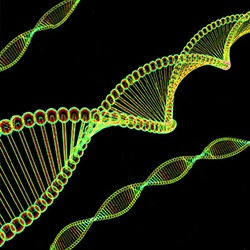
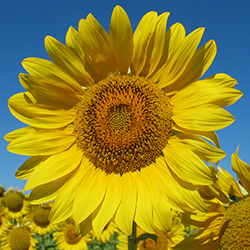
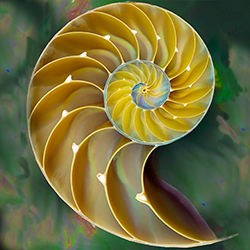
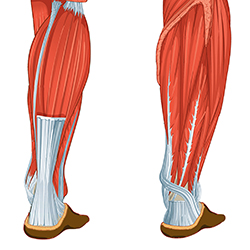
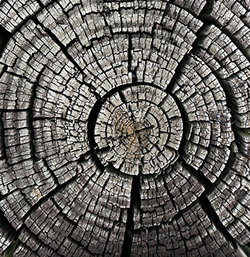
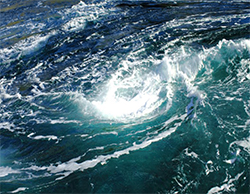
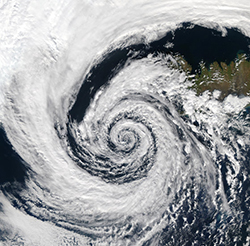

© 2025 Wisdom Center, Inc.
All rights are reserved.
Contact Info
Marc Sabin
T: 212-960-3238
taiji@MarcSabin.com
Quick Navigation
Connect with Marc
